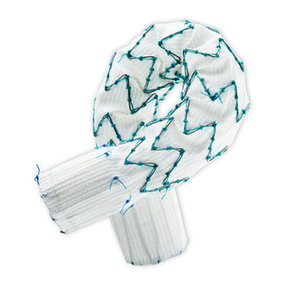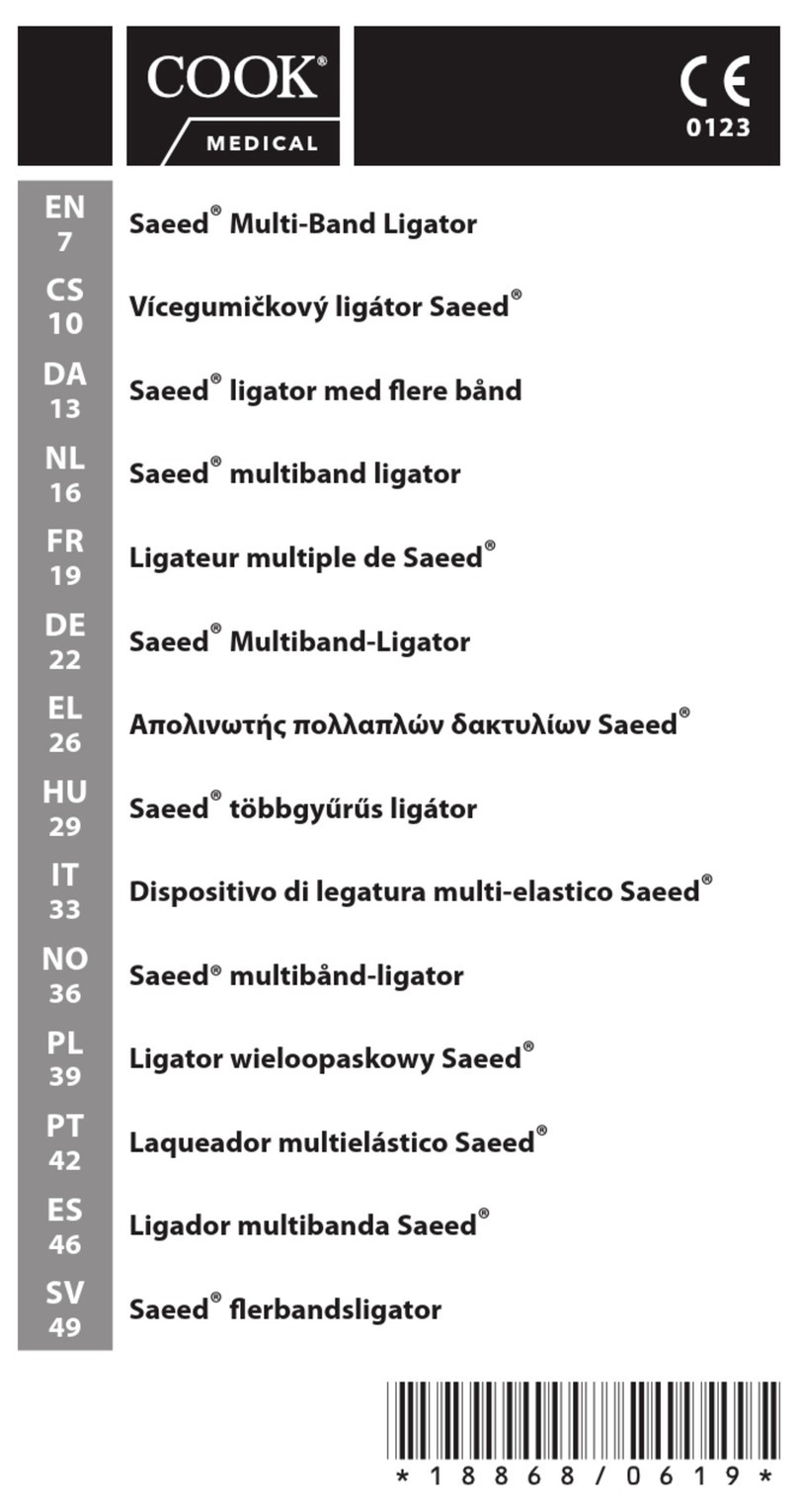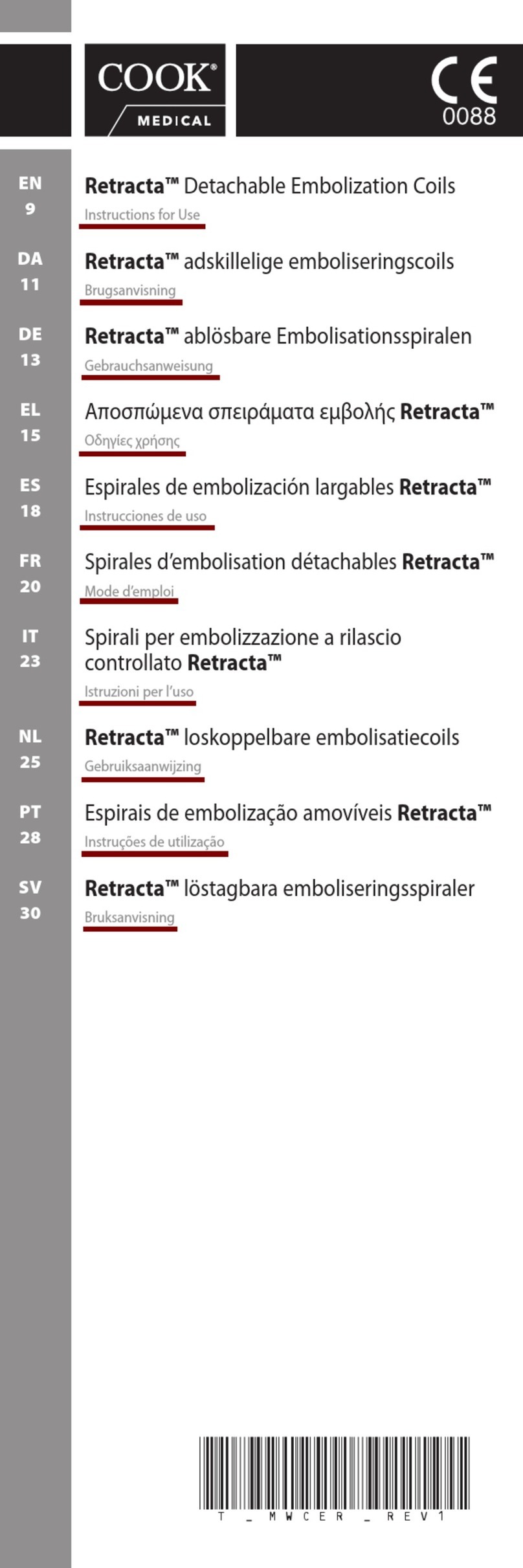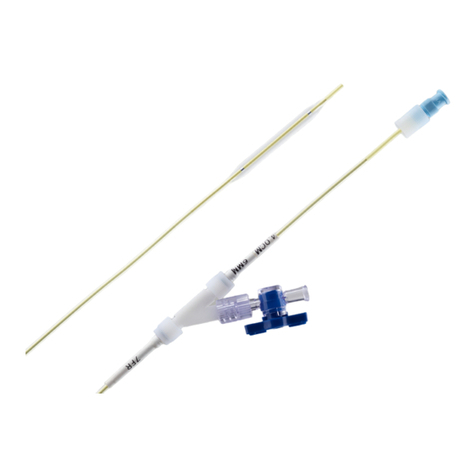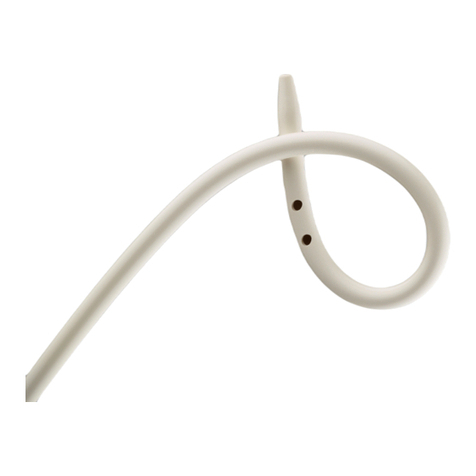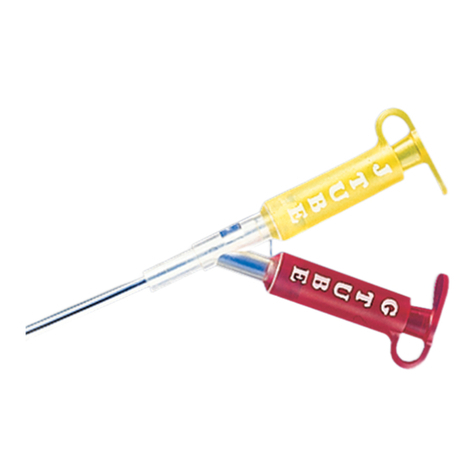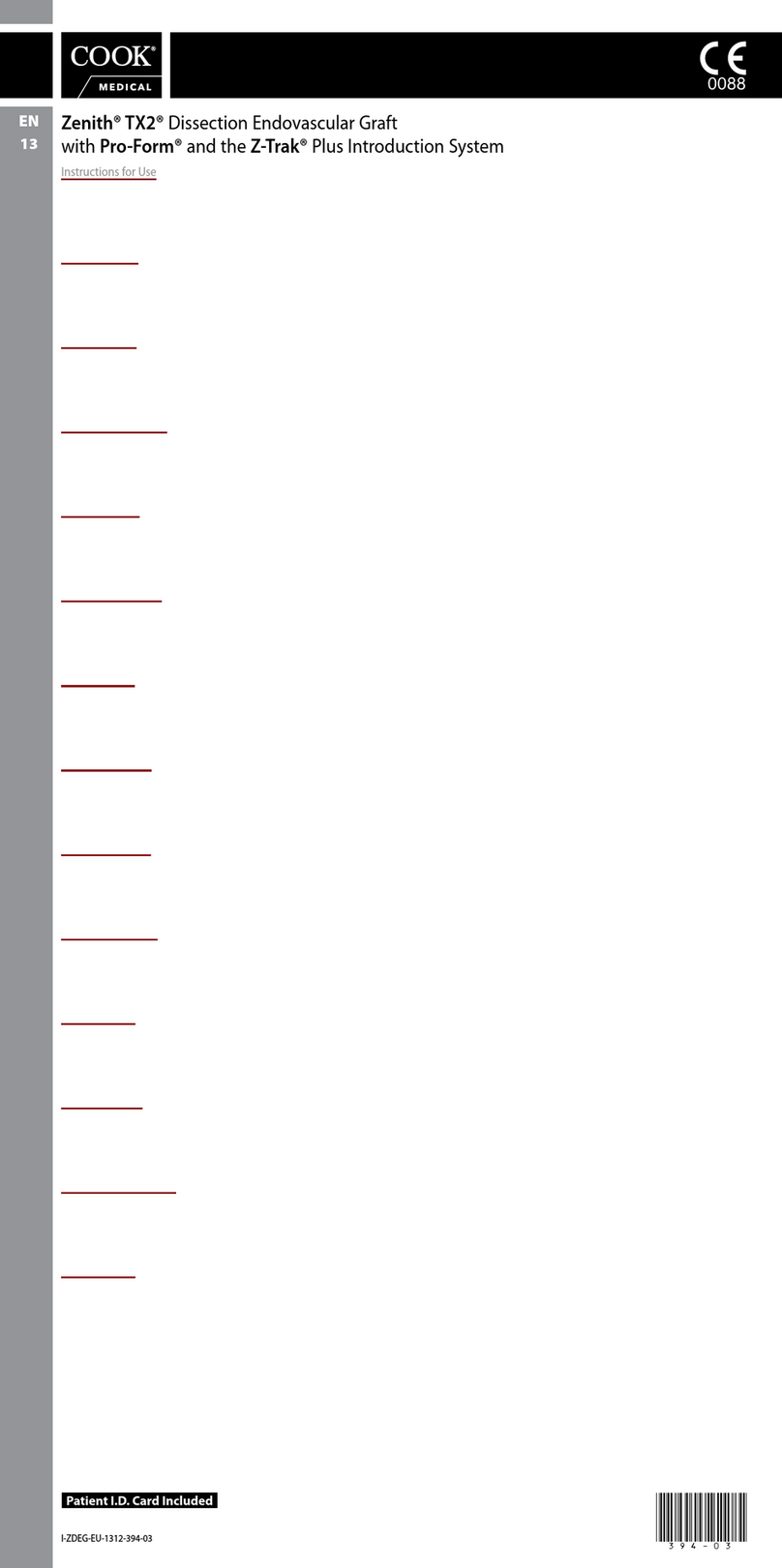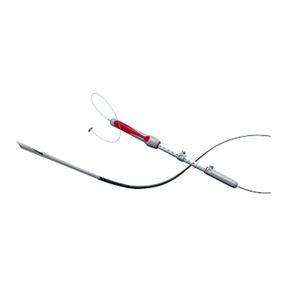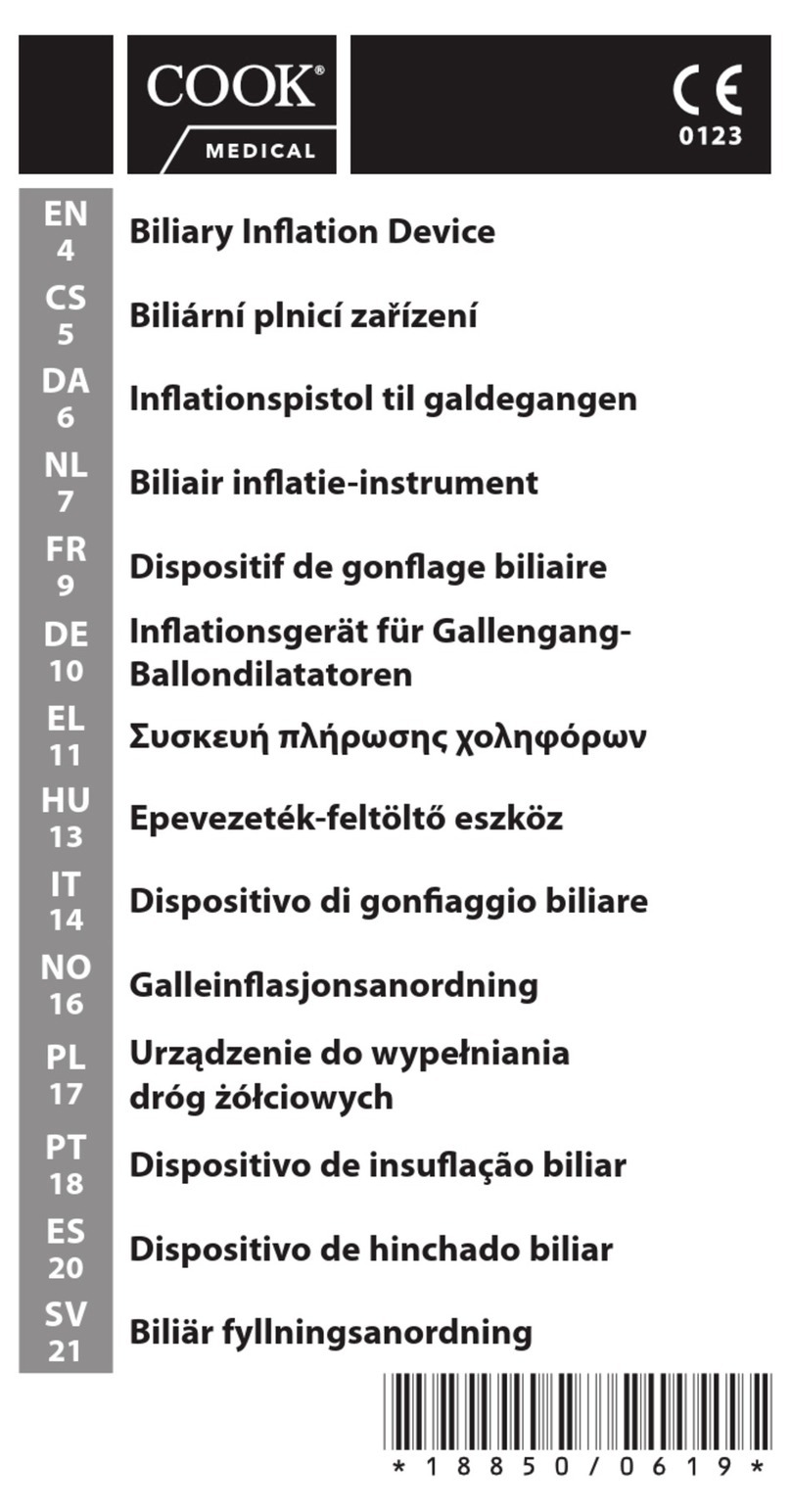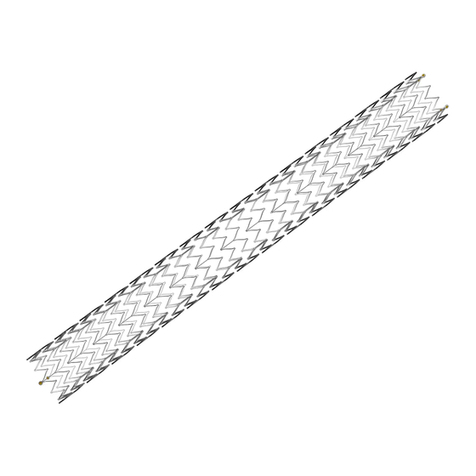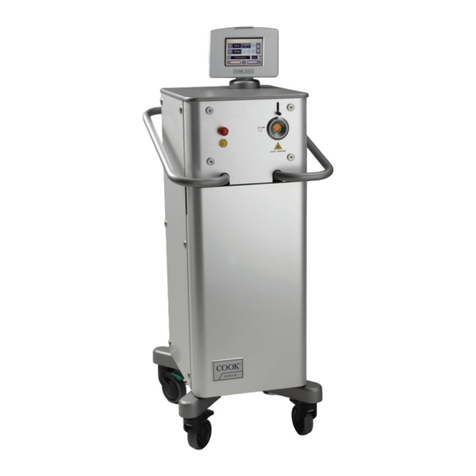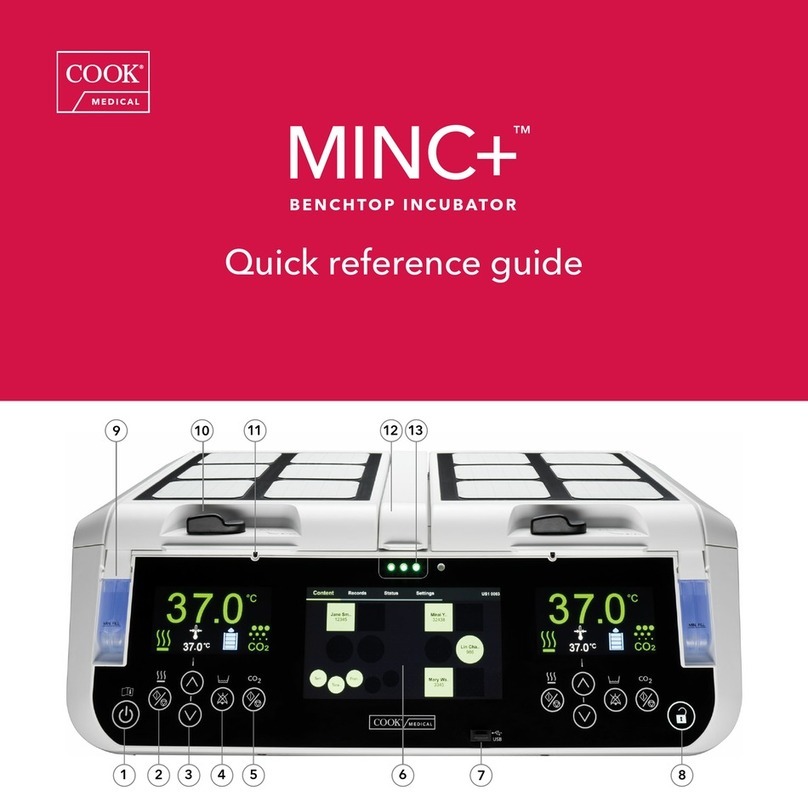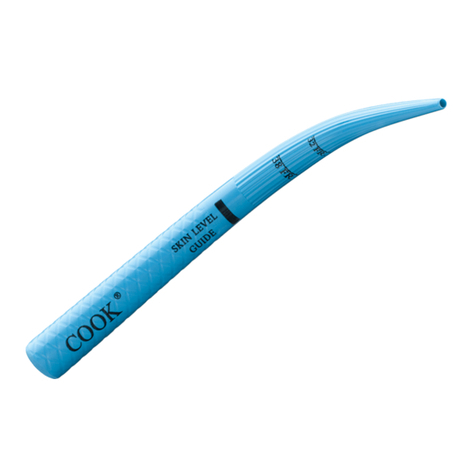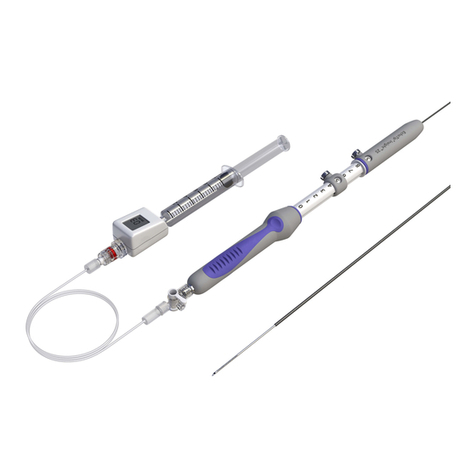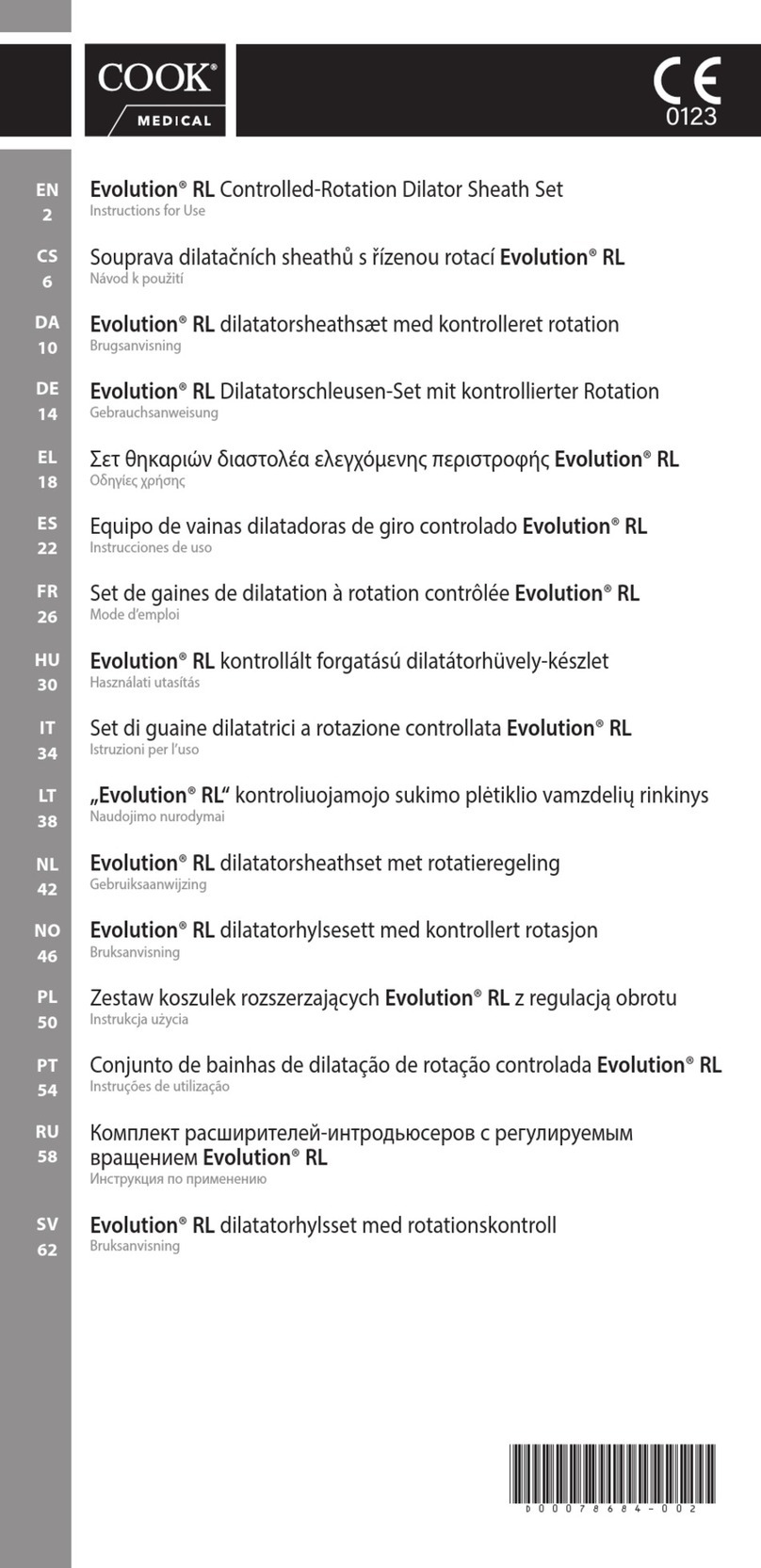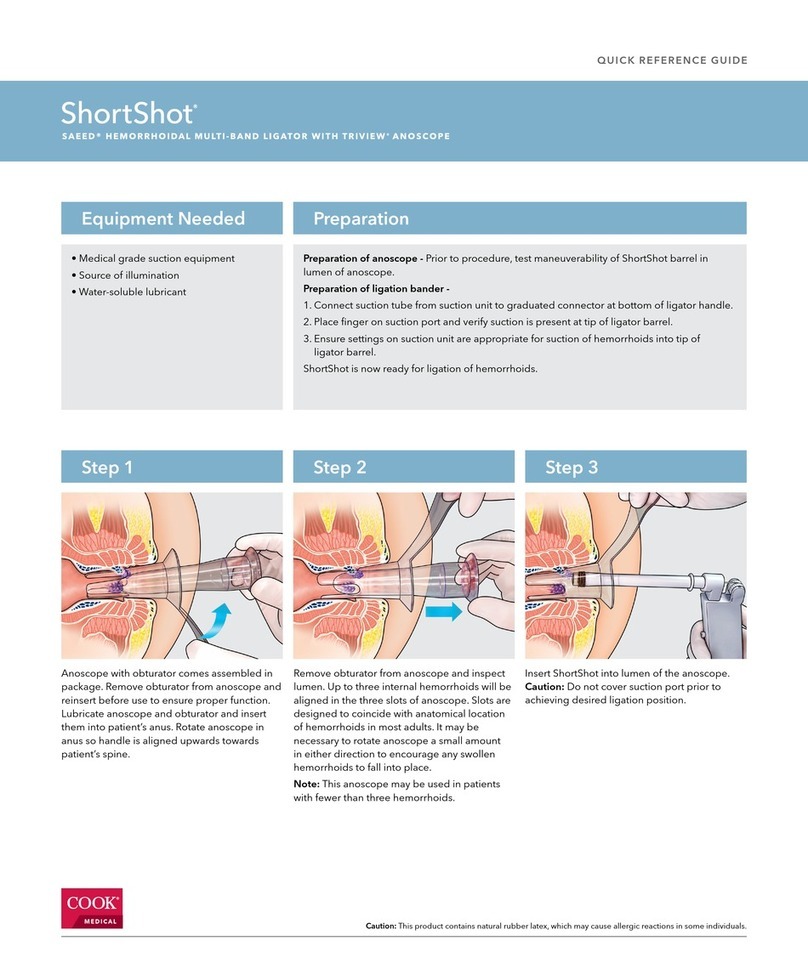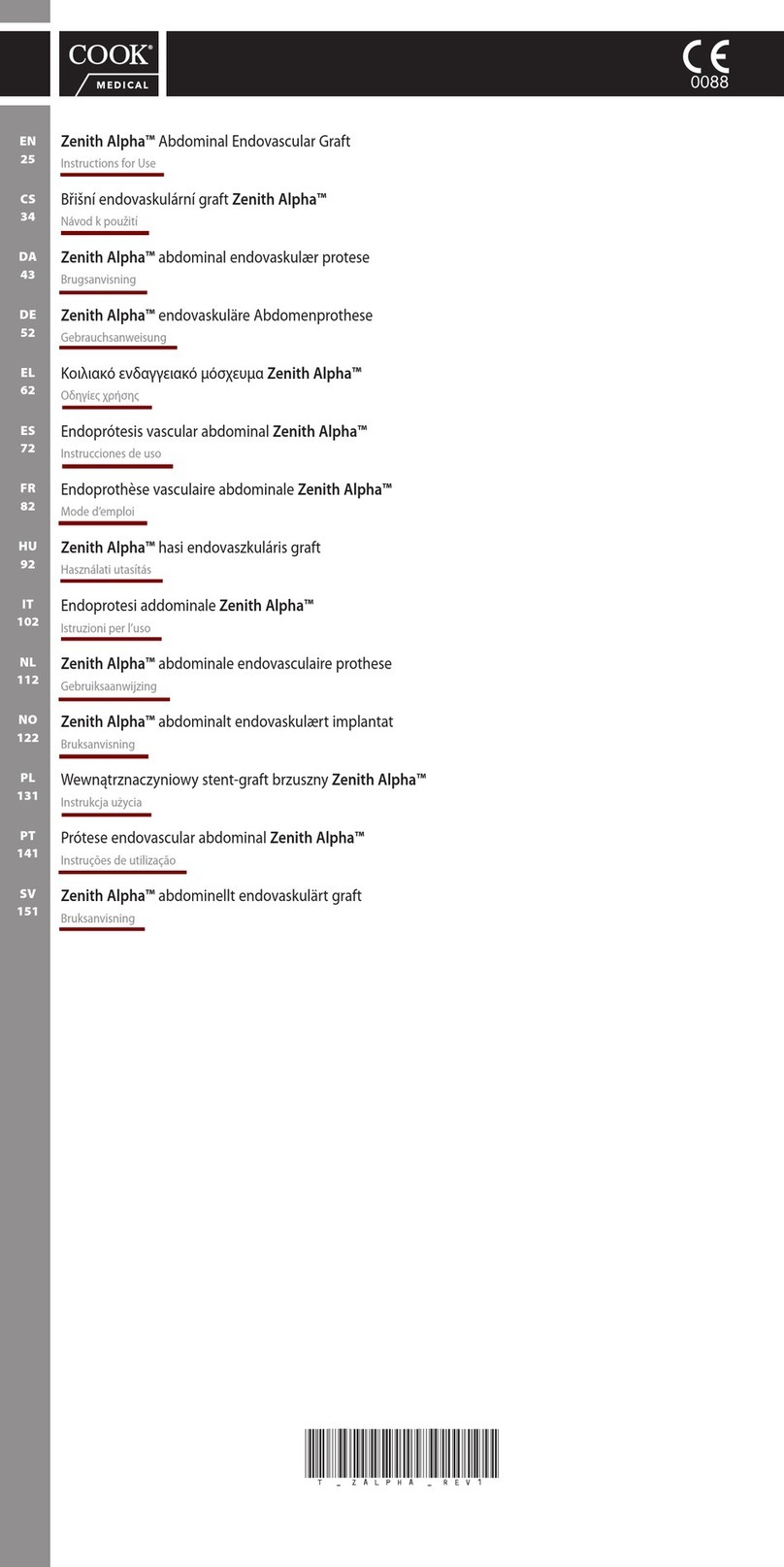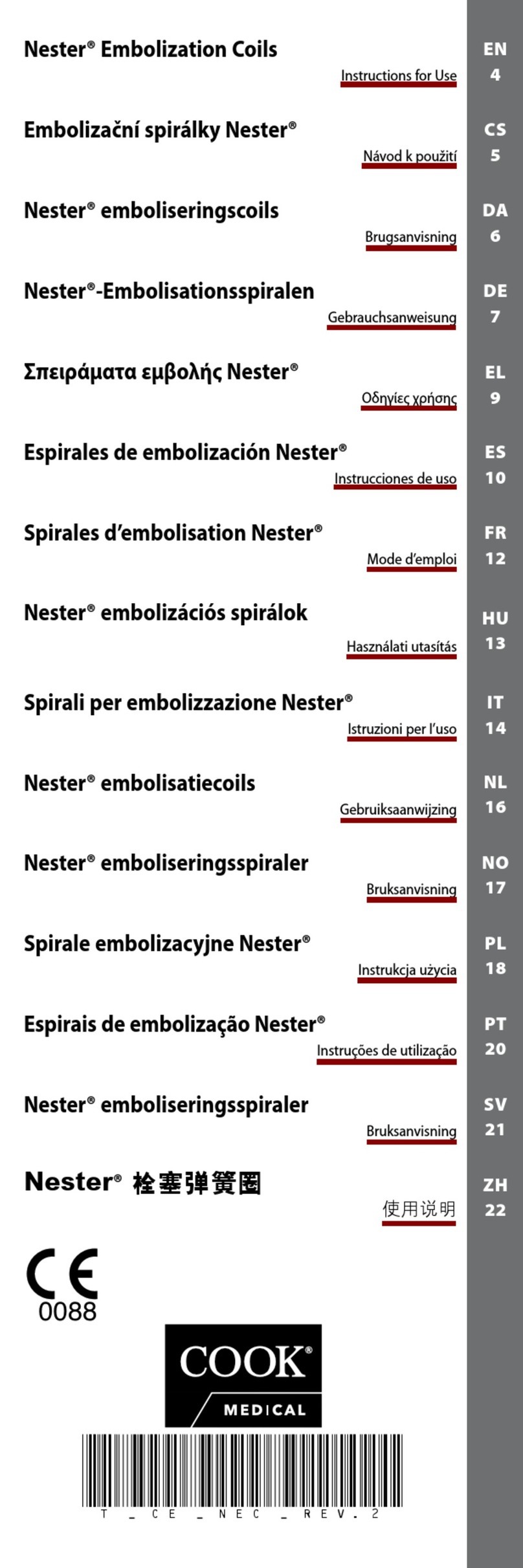
8
PRECAUTIONS
• The product is intended for use by physicians
trained and experienced in diagnostic and
interventional endovascular techniques.
• Standard techniques for placement of vascular
access sheaths, angiographic catheters and wire
guides should be employed.
• Cook Celect Platinum Filter Set should be used in
patients with vessel diameters compatible with the
associated device components.
• Product (filter or introducer system) modification
or alteration is not recommended, as the product’s
safety and effectiveness have not been established
following any modifications.
• Manipulation of products (e.g., placement and
retrieval) requires imaging control.
• Before injecting any contrast media (by either
power or hand injection) through the introducer
dilator, ensure that the introducer sheath hub and
introducer dilator are correctly connected.
• Possible allergic reactions (e.g., to cobalt,
chromium, nickel and platinum) should be
considered.
• Ensure that the patient does not have impaired
tolerance to general, regional, or local anesthesia
to avoid adverse reactions associated with the
anesthetic procedure.
• Ensure that the patient is not allergic/sensitive to
contrast media, since the use of contrast media
during the procedure and/or during postoperative
imaging may cause an allergic reaction and/or
other contrast-induced harms.
• Filter tilt has been reported. Potential causes may
include filter placement in IVCs with diameters
smaller or larger than those specified in these
Instructions for Use; improper deployment;
manipulations near an implanted filter (e.g., a
surgical or endovascular procedure in the vicinity
of a filter); and (or) a failed retrieval attempt.
Excessive filter tilt may contribute to difficult
or failed retrieval; vena cava wall penetration/
perforation; and (or) result in loss of filter efficiency.
• Vena cava wall penetration/perforation hasbeen
reported and may be either symptomatic or
asymptomatic. Potential causes may include
improper deployment; and (or) excessive force or
manipulations near an in situ filter (e.g., a surgical
or endovascular procedure in the vicinity of a
filter).
• Filter fracture has been reported and may be either
symptomatic or asymptomatic. Fracture of a filter
leg may be due to repetitive motion on a filter leg
in an unusual, stressed position, such as a filter
leg penetrating/perforating the IVC; or a filter leg
being caught in a side branch (e.g., a renal vein).
Other potential causes of filter fracture may include
excessive force or manipulations near an implanted
filter (e.g., a surgical or endovascular procedure in
the vicinity of a filter). Retrieval of a fractured filter
or filter fragments (including embolized fragments)
using endovascular techniques has been reported.
• Filter or filter fragment migration and (or)
embolization (e.g., movement to the heart or
lungs) has been reported. Filter or filter fragment
movement has occurred in both the cranial and
caudal direction and may be either symptomatic or
asymptomatic. Potential causes may include filter
placement in IVCs with diameters smaller or larger
than those specified in these Instructions for Use;
improper deployment; deployment into thrombus;
dislodgement due to large thrombus burdens; and
(or) excessive force or manipulations near an in situ
filter (e.g., a surgical or endovascular procedure in
the vicinity of a filter).
• Increased friction and/or compression at the access
site during the procedure may lead to increased
risk of thrombosis at the access site.
• Follow the instructions thoroughly to ensure
successful deployment, and to avoid any harm to
the patient or damage to the device.
• If the introduction system or parts of the
introduction system malfunctions prior to or
during procedure, the device should be replaced. If
the device malfunctions during procedure, perform
careful replacement to avoid injuries to the access
site and vessel.
• Failure to store the device correctly may result in
material degradation and/or damage to the device.
Filter Placement
• For placement of the filter, the right jugular vein
is usually preferred due to its straighter route to
the vena cava. An approach via the left jugular
vein may be possible, depending on the patient’s
size and anatomy, and the location of any venous
thromboses.
• The filter may be repositioned prior to final
deployment by carefully advancing the introducer
sheath over the filter; repositioning the system
as desired; and again withdrawing the introducer
sheath by reattaching it to the protection sheath
hub, completely exposing the filter.
Optional Filter Retrieval
• Physician practice guidelines and published
guidance from regulatory agencies recommend
that patients with indwelling filters undergo
routine follow-up. The risks/benefits of filter
retrieval should be considered for each patient
